Kommбndo Spezialkrafte (KSK) - special forces division of Germany
KSK is a part of the army unit for conducting military operations in the framework of crisis prevention and crisis confrontation, as well as in the framework of the country's defense and the defense of the allied nations of NATO;
KSK's tasks include:
Troop and technical reconnaissance in the rear of the enemy, or in the conditions of penetration of protected objects and conducting sabotage activities on their territory;
Operations to eliminate the leaders and senior military officials of the enemy, headquarters, communication systems and infrastructure of military leadership;
Rocket management and aviation blows directed deep into the territory of the enemy (marking the target with a laser). Interaction with other parts of the armed forces;
Rescue and release of their own and allied soldiers;
Confronting the actions of similar anti-sabotage and anti-terrorist units deep in the enemy's rear;
From the expanded range of tasks, special forces receive new special missions that cannot be performed by regular army units due to their nature or insufficient training.
Little about the huntsmen
To begin with, we will not confuse the rangers of the military with the forestry workers. They are also called rangers, but their tasks are slightly different.
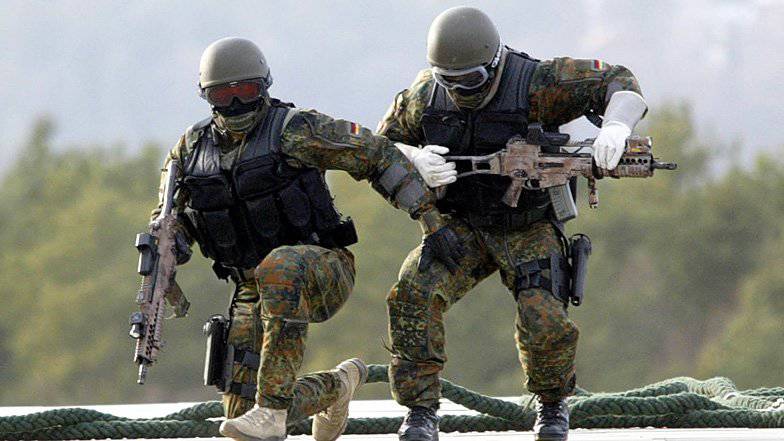
Initially, the huntsman (him. Jäger) - a hunter, shooter. And in order to understand the essence of the application of this concept to the military, it will be necessary to return to the 18 or even the 17 century. We must remember that at that time the battles looked very different than in our time. The ranks of the soldiers lined up opposite each other and exchanged volleys from rifles. Smooth stem weapon, provided very low accuracy, and that is why only volleys of a large group of soldiers could be considered productive. In addition, black powder created a lot of smoke and after the first volleys on both sides, the battlefield was completely hidden under clouds of black smoke. With the invention of rifled weapons and smokeless powder, the situation begins to change. At the same time, the concept of light infantry began to take shape. Small squads armed with rifled weapons for accurate shooting, intended for reconnaissance, ambushes and imposing battle on large enemy forces, followed by a quick retreat for redeployment. As says storyThis innovation was noted initially in several regions of Germany and later spread to the armies of other countries. In such units they recruited mainly hunters who from childhood went through the forests and were able to move almost silently and unnoticed. In addition, most of them were excellent shooters, which allowed the use of troops for the point of destruction of the enemy command or poorly protected units, such as engineers or engineers.
World War I
At the beginning of the 20 century, Eger units existed in the Imperial German Army, the Austro-Hungarian, Swedish, Dutch and Norwegian armies. These also include British rifles, chasseur in France, and cacciatori in Italy, or troops called light infantry in other armies. Light infantry service was considered quite prestigious, and in most armies of the world training, equipment and rangers were different from conventional infantry units, although it was associated with linear infantry tactics.
In peacetime, in the Prussian army there was one Imperial Guards Chasseurs battalion (Garde-Jäger-Bataillon) and 12 linear hunters battalions. With the beginning of the First World War and the announcement of a general mobilization, the 12 Jaeger battalion was additionally created. In May 1915, the Jäger battalions were merged into the Jäger regiments and at the end of the 1917, the German Eger Division was formed.
In the early stages of World War I, German rangers mostly performed the traditional roles of skirmishers and scouts, often in conjunction with cavalry. With the beginning of the trench troops, they were assigned to ordinary infantry and in fact lost their special status as independent troops.
The Second World War
After the end of the First World War, the German Imperial Army was disbanded, but its traditions were transferred to the 100 infantry regiments of the thousandth Reichswehr of the Weimar Republic, and later with the coming of the Nazis to power and the beginning of Germany's rearmament, Wehrmacht revived the name of the rangers for use in several branches of the military.
- In 1935, the first special mountain infantry regiments were formed under the name Gebirgsjdger (German “mountain infantry”)
- With the beginning of the formation of the first parachute regiments in the Luftwaffe at the end of 30, the first landing regiment, Fallschirm-Jäger-Regiment 1, was also created. Thus, the German paratroopers became known as the Fallschirmjäger (it. Fallschirm - parachute)
- Two ski (Skijdger) regiments were formed in 1943 as part of the Skijdger-Brigade, later reformed into the Skijdger-Division.
- several infantry divisions were created as light infantry (leichte Infanterie-Divisionen) at the end of 1940. Their main purpose was to conduct combat operations in a complex landscape of the southern territories of Eastern Europe. These infantry regiments were called Jdger-Regimenter.
- Wehrmacht anti-tank divisions, originally called Panzer-Abwehr-Abteilungen (anti-tank battalions), were renamed Panzerjäger-Abteilungen ("hunters of Tanks"). They were armed with towed or self-propelled guns. Later, anti-tank troops were armed with tank destroyers, known as the Jagdpanzer or Panzerjäger.
- Wehrmacht military police, known as the Feldgendarmerie. In December, 1943 formed new military police forces directly subordinate to the High Command of the army. These units were called Feldjdger-Kommandos and had subordinate regiments and battalions of feldegeries (Feldjdger)
After the second world and modernity
The German Bundeswehr abandoned the name Feldgendarmerie and instead left the name Feldjdger for its military police. In addition, measures were taken to emphasize the traditions of the Prussian Reitendes Feldjdgerkorps, and not the Wehrmacht policemen of the Feldeger Bundeswehr dressed in a red beret with a cockade depicting the star of the Order of the Black Eagle, the highest order of the Prussian army.
In addition, the Bundeswehr Light Infantry became known as Jäger and received a green beret with a cockade depicting oak leaves. Fallschirmjdger, Gebirgsjdger and Panzerjdger also remained in the ranks and retained their role as an assault force, mountain rangers and anti-tank forces (later becoming not infantry, but armored troops).
Modern Jdger-troops are distinguished as:
- Jäger - light infantry for difficult terrain, where the equipment of motorized infantry is useless. Wear the above described green beret with a cockade.
- Fallschirmjдger - parachutists, mainly for airmobile operations. Wear a red beret with its own unique cockade.
- Gebirgsjдger - light infantry for high mountains and difficult landscape with special equipment for conducting combat operations in winter conditions.
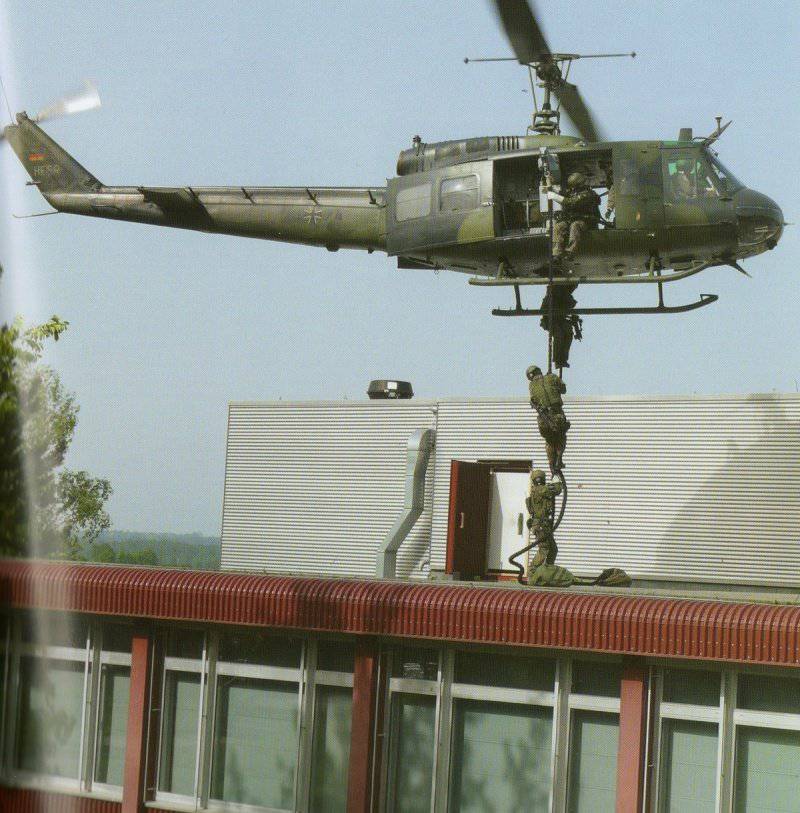
Each battalion has in its composition a heavy weapons company that is armed with a Wiesel armored personnel carrier with an 20mm gun, anti-tank missiles or 120mm mortars. They do not wear a beret, but their own mountain cap (Bergmötze) with the Edelweiss sign.
After the restructuring of the Bundeswehr, there was only one Jäger battalion (292 Jäger Regiment as part of the German-French brigade) and one Jäger Regiment (Jagerregiment 1).
Mountain hunters of Germany - from tradition to modern times
Mobility includes partial failure or reduction of heavy weapons and an emphasis on the development of lightweight parts. These include the 23 mine brigade (Gebirgsjaegerbrigade 23) located in the south of Bavaria in the Alps. This brigade is organized by the 10 armored division. Divisional division is quite traditional for the ground forces, and in the near future it is unlikely to be abandoned. The 10 Tank Division consists of diverse brigades. This is the already mentioned 23-I Mountain Brigade, the Franco-German Infantry Brigade and the 30-I motorized infantry brigade (cropped). Thus, the word “tank” in the division name exists more according to tradition, since the total number of tanks in it does not exceed 50 units. Mining brigade enjoys considerable independence and it is she from the division that stands out as part of the rapid deployment.
In the near future, the 23 mine brigade (in fact, light infantry) is planned to be part of the rapid deployment forces. The brigade is equipped mainly with light weapons, with the exception of an artillery battalion equipped with self-propelled and towed guns.
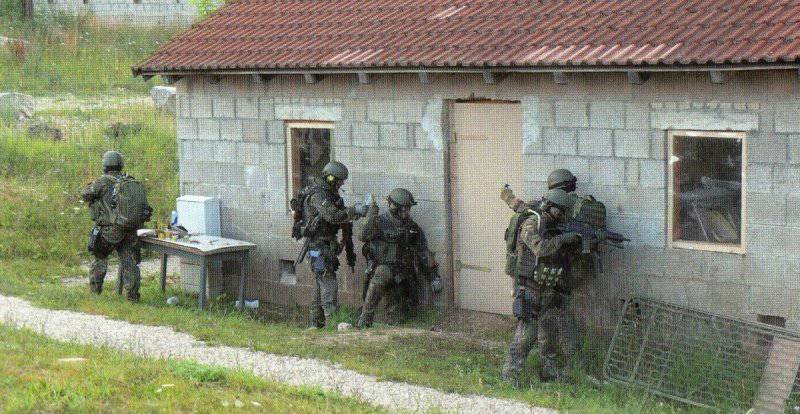
The tasks of the brigade, which is already considered as a kind of special unit, include actions in harsh climatic conditions from the Arctic to the desert, hard-to-reach areas, as well as in populated areas (this has received increased attention recently).
Organizational team consists of three gornopehotnyh and gornoartilleriyskogo battalion: 231-th GPB (Bad Reichenhall), 232-th GPB (Bischofswiesen / Strub), 233-th GPB (Mittenwald), 225-th gornoartilleriysky battalion (Fuessen). The brigade also includes the 230 training center for mountain animals. 8-th mountain engineering battalion, 8-th mountain battalion logistic support.
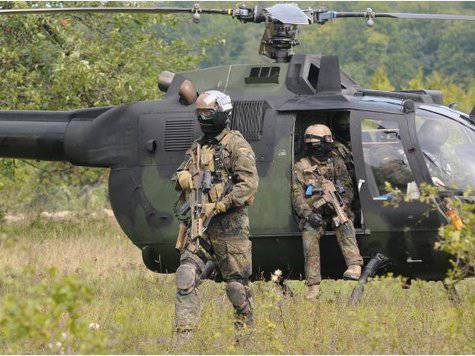
The mining battalion consists of five companies: a staff company, three infantry and one heavy company, armed with light tracked Wiesel armored vehicles carrying the TOW ATGM or 20-mm cannon.
In order for the brigade to more fully meet the tasks assigned to it, its reorganization continues. First of all, the number of over-soldiers will be increased.
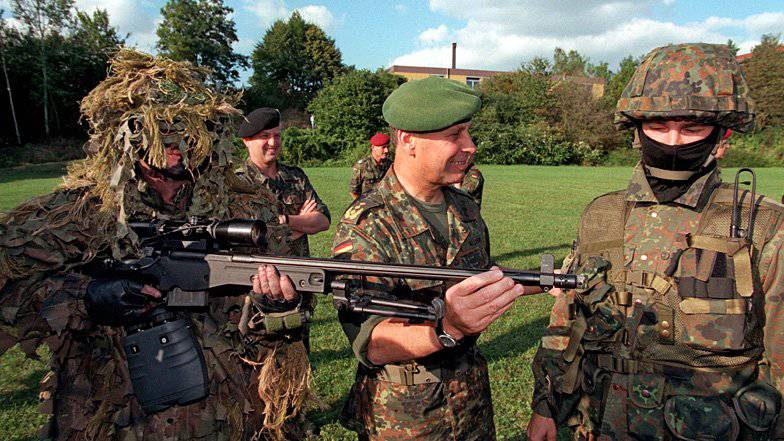
Necessary explanation. The combat readiness of the unit (KRK) also implies the completion of units and units with recruits and contract servicemen in various proportions. With this, units are staffed exclusively with recruits or contract soldiers, not including junior commanders. The company is usually completed at the rate of two platoon recruits, two contract soldiers. Usually in this case it is considered that the KRK of this company is 50%. Therefore, in order to give the brigade the status of a quick reaction unit, it is necessary to increase the number of contract soldiers to increase its combat readiness.
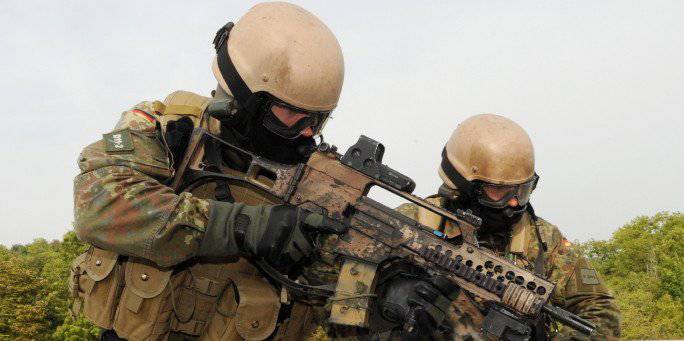
In addition, last year the engineering battalion and the logistics battalion were included in the brigade. This is despite the fact that in order to save money and reduce the number of personnel, the rear command of the ground forces was recently created, which included logistic units and support units, derived from direct division, for example, submission. If necessary, units from the rear command are assigned to the formation involved in the operation.
Also in the heavy companies that make up the mountain rifle battalions, the number of Wiesel armored vehicles has been increased from 8 to 24. And the total brigade strength should increase from 3 705 to 4 991 man. New communication and control systems are being introduced. Thus, on the basis of the brigade is formed a kind of connection of the future.
However, the realities of Germany are such that even after assigning the brigade status to a “quick response unit”, it will be difficult to recognize it as such in our understanding of this status. Just one example, on weekends the whole staff diminishes into dismissal from the location of the unit. Only duty soldiers and officers remain. Consequently, the timing of the mobilization readiness of the brigade, from our point of view, leaves much to be desired. However, the Germans themselves believe that in the near future they are unlikely to have a situation requiring the deployment of a brigade in the 72 hourly period. Only the process of coordinating positions in NATO and then in the Bundestag will take about a month.
Currently, military personnel of the 23 Brigade are serving in the Balkans and in Afghanistan.
The interaction with the mountain parts of other countries, both European (France, Austria, Italy) and American, has been established. Action classes in the Arctic are held mainly in Norway.
It is worth noting that the reorganization of the brigade also provides for retrofitting with technical means, for example, Swedish light all-terrain vehicles “Hegglund” replace the 2-ton trucks. Also soon, new modular armored vehicles will be adopted. The personnel of the brigade is distinguished by good physical training. Most of the officers and sergeants are discharges in various sports, mainly winter and mountaineering.
Speaking of actions in the mountains, it is necessary to note the presence in the composition of each battalion of a high-altitude platoon (Hochzug). His task is to lay a route for the main battalion when passing through difficult areas, for example, steep walls.
Directly mountains carrying cargo and equipment is mainly carried out by personnel. For example, mortars are disassembled and transferred by calculation. However, the brigade also has an 230 training center for mountain animals. It consists of 120 heavy horses and mules. The squad of 2 mining animals has a platoon of three divisions each and a staff unit.
The center is mainly engaged in the tasks of studying the use of pack animals in combat situations. Some of the center’s personnel, along with horses and mules, are located in the mountainous regions of Kosovo. The center is currently unable to provide its entire brigade with its animals, however, the available developments allow at any time to increase the number of animals to the required limits. In the past year, the question of liquidating the center as an anachronism was repeatedly raised. However, the successful experience of the Balkans proved the need to preserve such a unique military unit.
Horses and mules are used mainly as pack animals, but they can also be used to transport wounded people on sleds or drags. In some cases, they can be used as mount animals, for monitoring places or patrols.
Alpine Arrows (Germany).
Parts of the alpine (mountain) shooters (Gebirgsjager) were created during the First World War, when Germany needed specialized units to support the Allied Austria on the Italian front. The alpine edelweiss flower became the emblem of the Alpine shooters.
During the Second World War, the Alpine shooters were already considered as an elite formation and used in battles that required their special climbing skills.
They went through the whole war and acted on all fronts: from Norway to the Balkans and especially in Russia. When the invasion of Poland began in 1939, the 1-i, 2-i and 3-i divisions of alpine riflemen swept the Polish forces from the flanks, and shortly thereafter the 2-i and 3-i divisions were redeployed to Norway to prevent the landing of the allies in Narvik. By their decisive actions, they quickly tipped the scales in favor of Germany. Formed in 1941, the 5-I and 6-I divisions of alpine shooters paved the way for the invasion of the Balkans and Greece.
After the surrender of the Greek army, the alpine rifle divisions took part in an airborne assault on Crete, defended by selected allied units. In confirmation of the already established reputation, the Alpine arrows fought like lions and provided invaluable assistance to the German paratroopers, who suffered heavy losses in this operation. When Hitler launched a war with Russia in 1941, divisions of alpine shooters took part in Operation Barbarossa. In the very first stages of the invasion, the 1 and 4 divisions broke through to the Caucasus and hoisted their flag on the top of Elbrus. When events in Russia took a slightly different turn, the Alpine arrows were forced to retreat to the borders of the Reich. For several months, 1, 4, 6, and 7 divisions defended Odessa. From 1941 to 1945, alpine arrows were also used in Finland and Norway to reflect the breakthroughs of the Russian troops. Unlike other parts of the Bundeswehr, the alpine shooters (as well as the airborne troops) jealously keep their fighting traditions.
Currently, the 23 Brigade of Alpine Riflemen is the only formation of the German army prepared for operations in the highlands. This brigade, along with the 22 th motorized brigade and the 24 th armored brigade, is part of the 1 th division of alpine shooters. The 22 motorized brigade consists of the 224 battalion of armored vehicles, the 221 motorized artillery, the 225 artillery and 220 anti-tank battalions, the 24 armored brigade consists of the 243 armored artillery systems, the BMNMNMXMMNMXMMT armored vehicles, the NMNXX-I armored artillery brigade, the 242 armored artillery battalion, the 235 armored artillery brigade The artillery and 240 anti-tank battalions, the 23 brigade of alpine riflemen with headquarters in Bad Reichenhalle (near the Austrian border) consists of three battalions stationed in Berchtesgaden, Brannenburg, Landsberg and Mittenvall, Landsberg and Mittenvall, The 231 battalion, consisting of four companies (three combat and one reserve), in wartime has up to 870 manpower, the 245 artillery battalion is equipped with eighteen 155-mm howitzers, 230 anti-tank has significant firepower in the form of 21 set of anti-tank jet systems Milan.
In addition, the team includes a team of climbers and several ski reconnaissance teams. In winter, all undergo alpine training. It is assumed that the Alpine marksmen as an elite formation will be part of the rapid reaction forces created in Germany. More than 80% of Alpine shooters are volunteers, mostly natives of Southern Bavaria. Perfectly trained and composed of selected fighters, the 23 Brigade can rightfully be considered an elite military formation.
Structure
The KSK is stationed at Calw in southern Germany. At the moment, this is an approximate 1,100 soldier, but only some of them (200-300) are directly involved in the fighting. The exact number of soldiers is not known, this information is kept secret. The KSK is part and subordinate to the Special Operations Division (Div. Spezielle Operationen).
Combat units are divided into four airborne companies in the heart of 100 people in each and a special company equipped with veterans, performing the role of support. Each unit has its own specialization:
• 1 platoon: land penetration
• 2 squad: air penetration
• 3 platoon: water penetration
• 4 platoon: operations in difficult geographical and meteorological conditions (mountains or polar regions)
• 5 squad: reconnaissance, sniper and sniper counter operations
• Command platoon
Each platoon is divided into four divisions. Each of the units includes an average of four fighters with the same knowledge. Each of the fighters is trained as a weapons specialist, medic, engineer or communications specialist. In addition, the group may be staffed by other specialists, for example, linguists or a specialist in heavy weapons.
Selection and training.
Minimum requirements for candidates:
Higher education
Citizenship of Germany
Passing the fitness test
Min Height: Women - 163 cm, Men - 165
Min Age - 18 years, max. Age - 24 of the year
Driver's license
Swimming discharge
Candidates with allergies or vision problems are not accepted.
Excellent knowledge of English or French
The ability to carry heavy physical activity while maintaining high concentration
Passing psychological tests (tests are carried out by Wolfgang Salewski (Wolfgang Salewski), who is also responsible for training negotiators)
Only soldiers of the Bundeswehr officers who are not retired and qualified as a paratrooper can be accepted into the KSK. And the precondition for acceptance is the basic commando course of the Bundeswehr ("Einzelkämpferlehrgang"). Beginning in 2005, admission is also open to civilians and military personnel who successfully completed the 18 monthly Extreme Survival course.
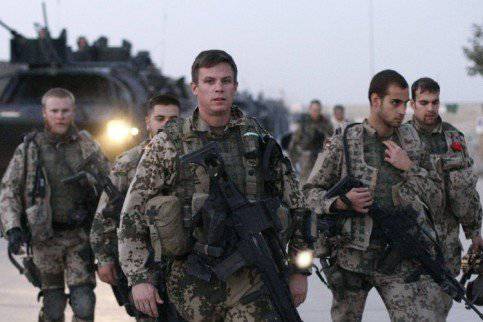
Selection is divided into two phases, the three-week first phase includes physical. preparation and psychological tests (you can score approximately 50% pass rating) and a three-month second phase for physical endurance (8-10% rating).
At the first stage of selection, under the supervision of specialists, using the method of submitting numerous sports standards, the level of physical fitness of the candidate is checked.
For example:
Five lifts coup in full gear.
Overcoming an obstacle course in 1 a minute 40 seconds.
A cross-country march to a distance of seven kilometers in field uniform with a backpack weighing twenty kilograms per 52 minute.
Swim on 500 meters in 13 minutes.
The KSK uses the Black Forest mountain region for second phase training. During this time, candidates must complete 90 km. march After which they take a three-week survival course in international conditions, avoiding pursuit and surveillance, called the Combat Survival Course at the German Center for Special Operations in Fullendorf.
If candidates pass all of these tests, they may be admitted to the 2-3 summer training session at the KSK. This training includes 20 antiterrorism tests in the jungle, desert, and urban environments and is conducted in more than 17 various schools around the world, such as Norway (Arctic), Austria (Mountains), Al Paso / Texas, or Israel (Desert), San Diego (Sea) or Belize (Jungle).
The number of German special forces - a thousand fighters, although, according to the German press, KSK is not fully staffed due to lack of volunteers. Service in the special forces is associated with a fair deprivation, which the additional payment does not compensate. The fighters sign an obligation to strictly keep military secrets, they have no right to tell even their wives about KSK operations and their participation in them, communication outside the barracks is reduced to a minimum.
Family among them, according to some, only a third. They can not boast of public recognition. The fighters cannot report at all that they are serving in special forces, and even a distinctive burgundy beret with a badge in the form of a sword is worn only in the barracks.
weaponry
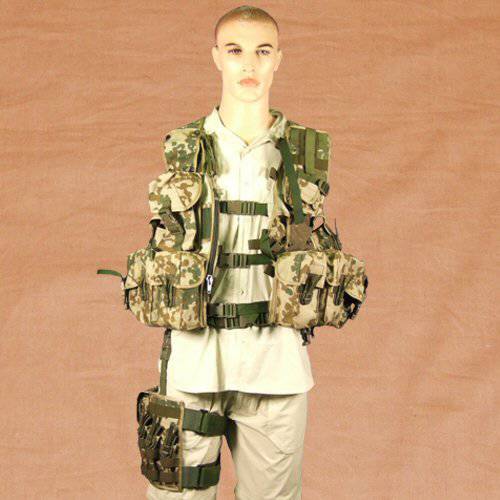
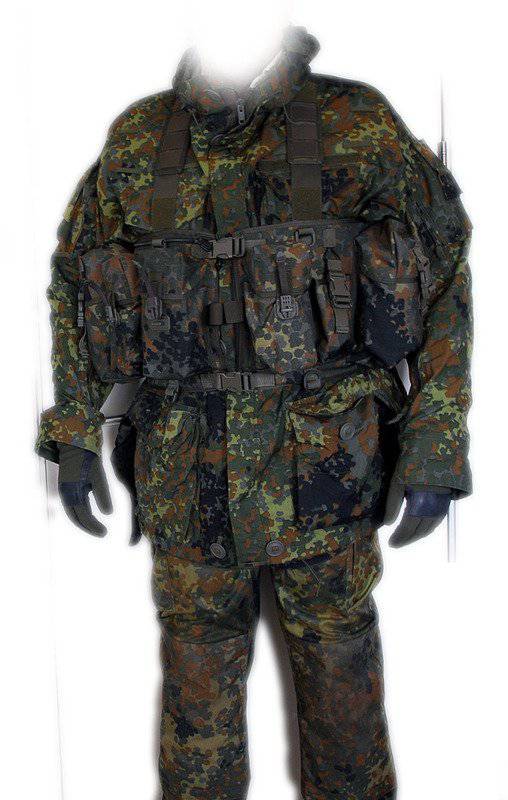
• H&K P8 semi-automatic pistol
• HK USP Tactical - pistol
• HK Mark 23 - pistol
• H&K 416 assault rifle
• H&K G36 assault rifle with AG36 underbarrel grenade launcher, or variant G36C
• H&K MP5 submachine gun or its modification H&K MP5K
• H&K MP7 submachine gun
• H&K UMP submachine gun
• G22 sniper rifle
• H&K PSG1 sniper rifle
• Panzerfaust 3 anti-tank grenade launcher
• H&K MG4 machine gun
• H&K 21 light machine gun
• Rheinmetall MG3 machine gun
• H&K GMG automatic grenade launcher
• Mercedes-Benz G-Class car
• AGF vehicle intelligence
• Snowmobiles
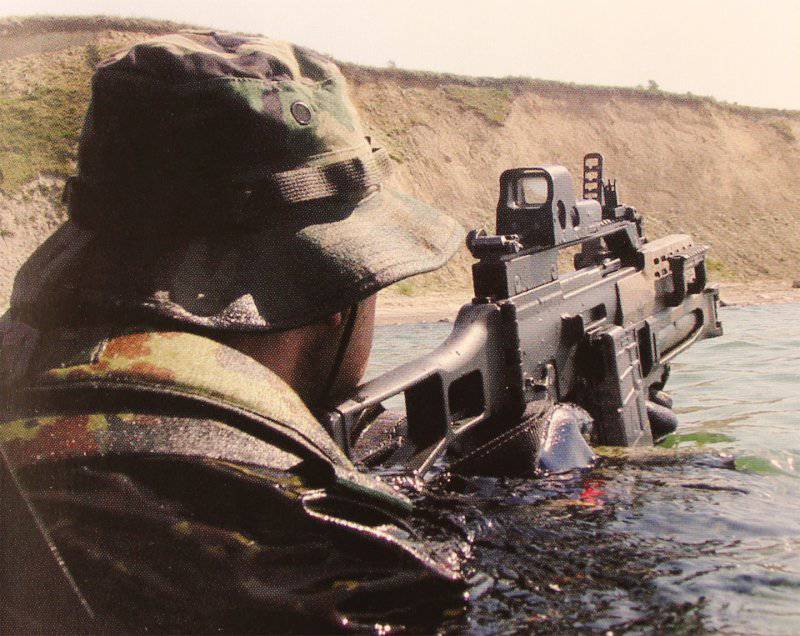
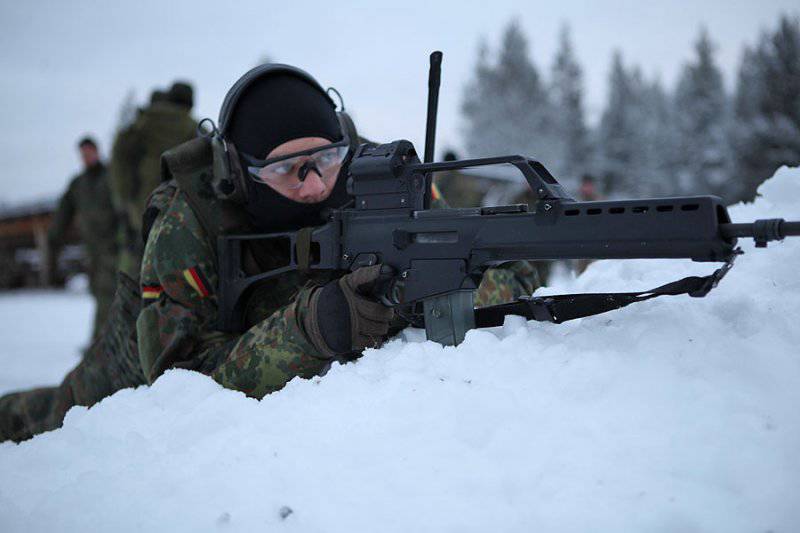
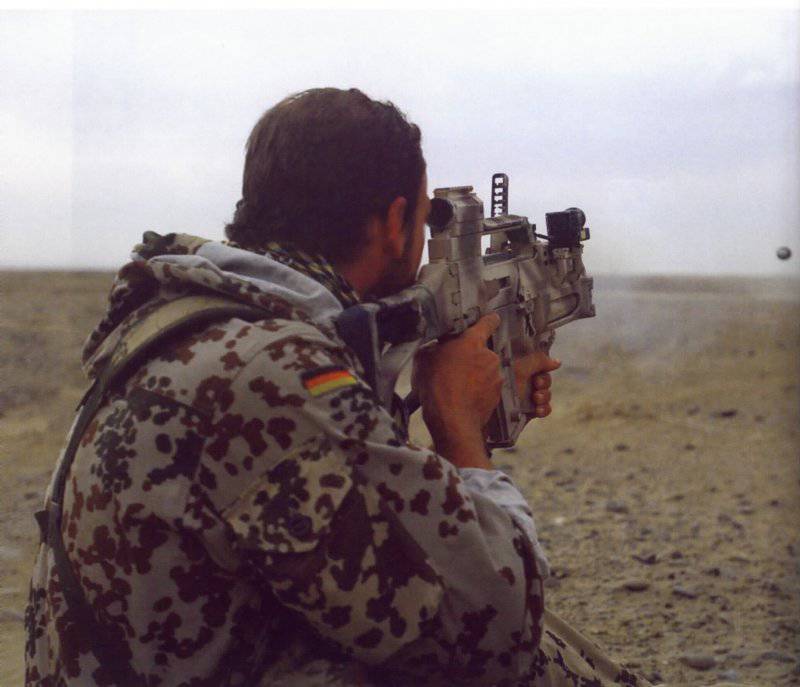
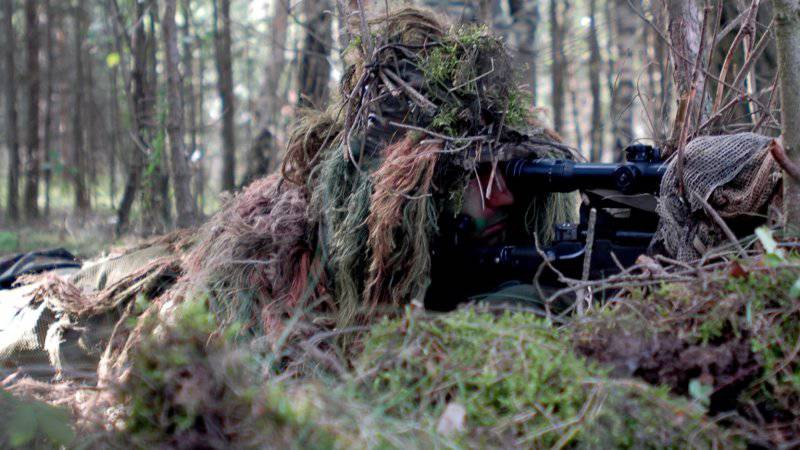
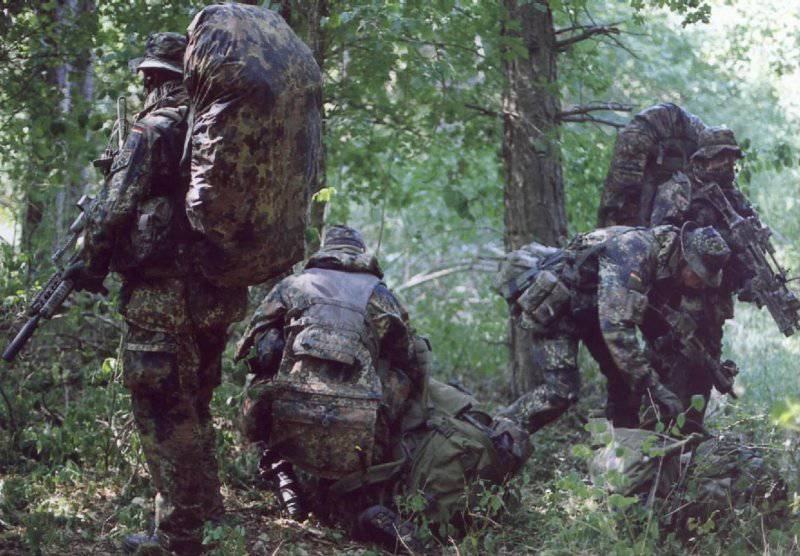
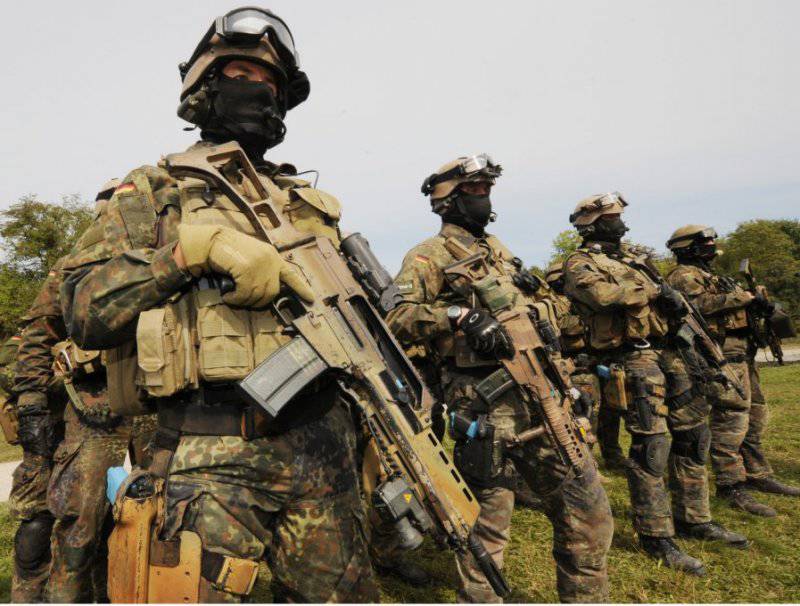
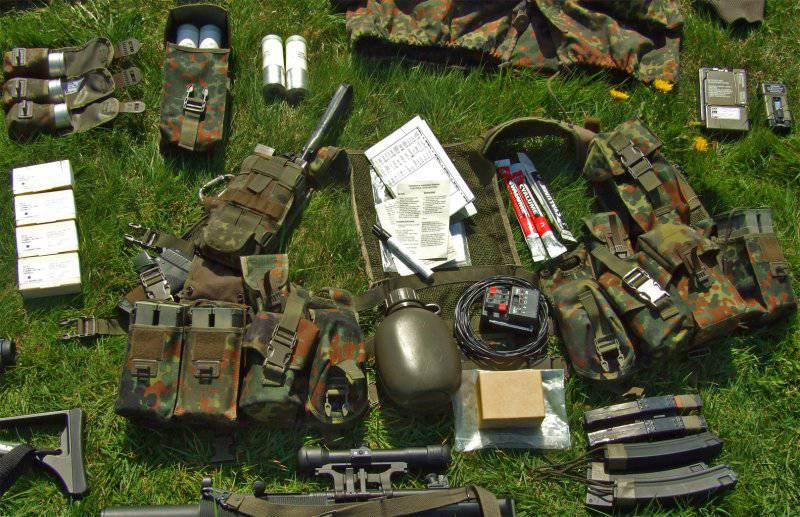
Information